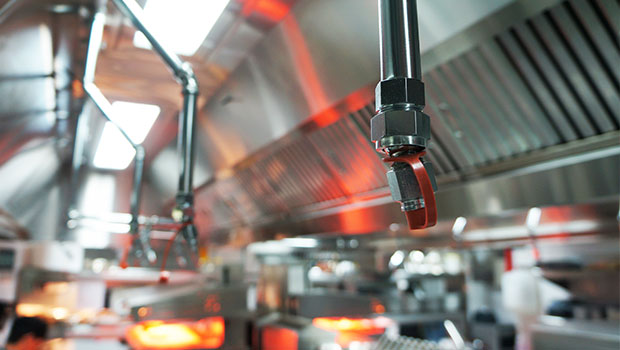
30 Jul Components of a Fire Suppression System
When people think about fire suppression systems, they mostly tend to think of active suppression such as sprinklers and extinguishers. There are two types of fire suppression systems, and along with that, we’ll be breaking down the components of a fire suppression system and a fire sprinkler system in this article.
Fire sprinkler system is a type of fire suppression system that have two types substances being released. Wet fire suppression systems are overhead sprinklers that are connected and filled with water that is under pressure. Once it reaches a high temperature point, the system will extinguish fire using water until firefighters arrive. Dry fire suppression systems are charged with compressed air, or different substances. When the sprinkler operates, it releases air and the control valve opens, allowing water to flow from the pipe and emit chemicals, gas, or foam agents.
Components of a Fire Sprinkler System
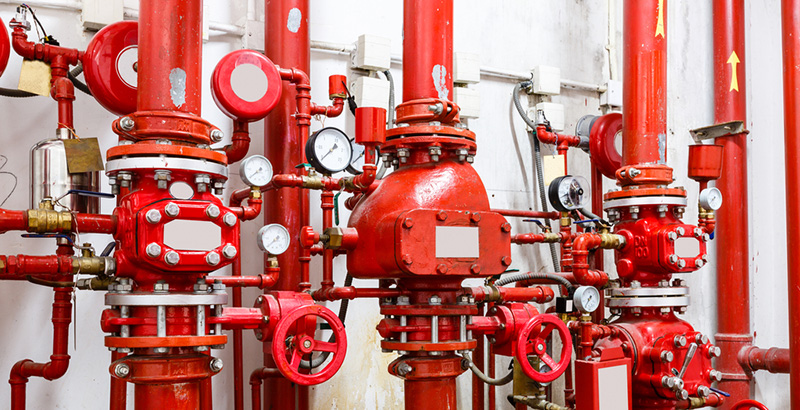
1. Alarm Valve
The alarm valve takes over for the stop valve when the fire sprinkler system activates. It also controls the flow of water into the sprinkler system. Once the fire sprinkler valves are closed, its heads are closed and the heads are only opened when it is unblocked.
2. Alarm Valve Test
This allows you to test your fire suppression system at shut-off conditions. It is useful for testing your fire suppression system without flooding your place.
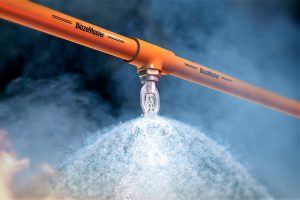
3. Motorized Alarm
This is basically a type of fire alarm. When the fire suppression system turns on, it reaches a bell that will make a loud noise and alerts the people in the place or property.
4. Sprinkler Heads
This is a part of a fire suppression system that you can see everywhere on a daily basis. It contains the flow of water for the area where the fire is occurring. Most fire sprinkler heads keep their release to a limited area where it is needed.
5. Stop Valve
A stop valve is usually red and should be locked in an open position. This stops the flow of water coming to the fire suppression system when the sprinkler does not go off.
Now, we head over to the actual fire suppression system such as gas or clean agent suppression system, and chemical foam suppression system parts.
Components of a Fire Suppression System
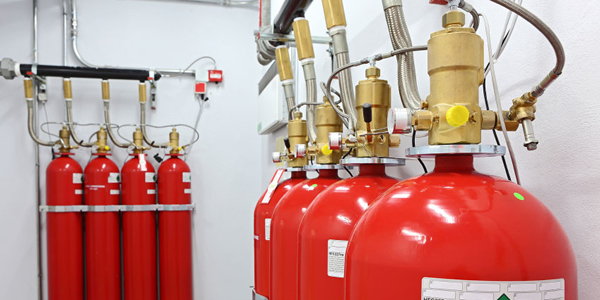
1. Fire Alarm Panel
This is the brain of your entire fire suppression system. It monitors every connected device and relays information between each part.
2. Initiating Device
Manual and automatic are two main types of initiating devices. Manual devices require a person to activate them. An example of this manual device would be places where you see extinguishers with a notice that says,“break in case of fire” or “pull in case of fire.” Automatic devices respond on their own to the detectable physical changes that comes with fire, heat, and smoke.
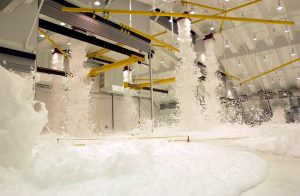
3. Primary Power Supply
It is the main source of power for your fire suppression system. Its supply and backup are usually consisted of batteries, an emergency generator, or some other type of emergency power device.
4. Secondary Power Supply
This will only take action once something happens to the primary power supply. It is to ensure that your fire protection and suppression system stays up and running even when the power goes out.
5. Notification Appliances
Notification appliances are basically fire alarms, strobe lights, and audio devices to notify people.
It is important to know the different components of fire suppression system in case of hazards that could happen at your home, office, or commercial place. And whether you are in need of a fire suppression system for different purposes, you also have to be familiar with how it works and its components.
Are you still looking for a fire suppression system distributor or installer in the Philippines? Contact our specialists today so that we can help you!
